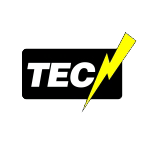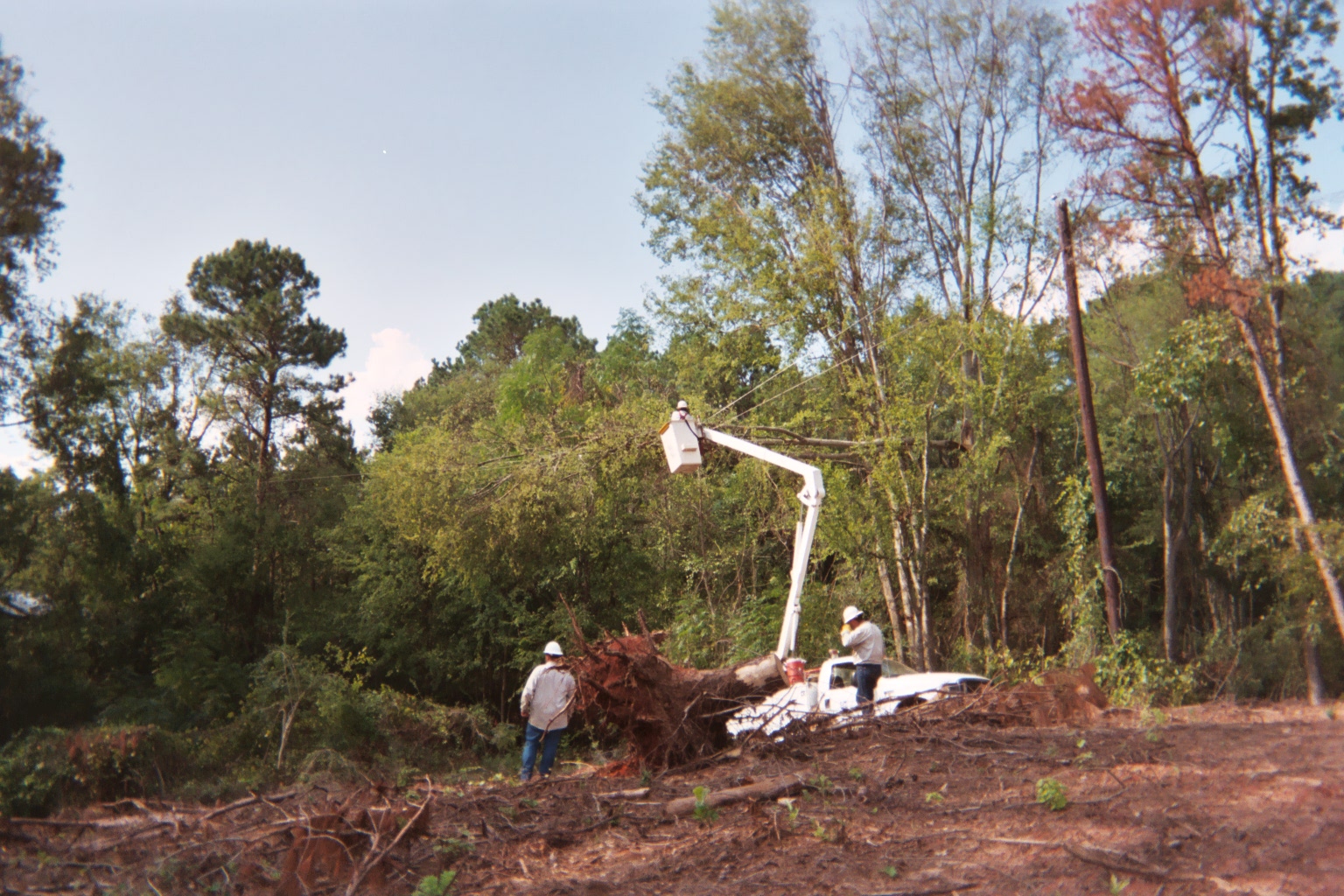Tree Trimming To Protect Power Lines
Do we need to trim a tree that is getting too close to one of our power lines? Contact us if you believe we need to assess the safety of a tree near a power line.
Tree Trimming Service
Trees help protect our home from elements, help beautify our neighborhoods, help clean our air and bring color to our lives. But trees can be dangerous. In storms the weakest, oldest and sometimes the healthiest trees fall on personal property including homes and cars. More often they fall on electric power lines and electric service is disrupted. Occasionally, a tree becomes a pathway to injury when a person comes into contact with a line. Trimming or removing tree branches by your local cooperative should occur on a regular basis not only for safety's sake but to alleviate potential power interruptions.
One of Thumb Electric Cooperative's primary responsibilities is to provide safe, reliable electricity to its members. Keeping our lines clear of trees is necessary to deliver better quality service to you. Our employees and brush crews we hire to help us are sent out on a planned, rotating schedule to clear trees and brush from our distribution rights-of-way. Our crews will cut branches, trees and brush next to and underneath electric lines. In wooded areas clearing of rights-of-way can occur up to 30 feet by using mechanical brush equipment. In some cases, trees will be removed. If this becomes necessary we'll attempt to contact you before the work is done.
The distance a tree is trimmed depends on the type of tree and voltage. In some instances, however, the removal of a tree is required. This is especially the case when public safety is involved, particularly children, or employees are in danger. A tree may have to be removed because it is dead, dying, or damaged.
The methods used to trim trees help the tree retain its natural shape, decrease future trimming needs and direct future growth away from electric lines.
Many times the trimmings will be turned over and used for cross-country trails or to protect wildlife.
If you want trees located near service lines trimmed, we recommend that you call us first to determine whether a private tree service company is necessary to assist you with clearing specifications. We will disconnect the electric service wire when a tree must be removed. Do not attempt to trim branches away from our power lines by yourself. If an object is caught in a tree, such as a kite, stay clear of lines when removing an object. Also, when using a ladder, be careful not to let it touch power lines.
Safety First
Before you plant a tree, look up, look down and all around. Miss Dig, Michigan utilities' computerized one-call protection service, is available by calling "811" or 1-800-482-7171 to help you safely locate where underground cable may be buried including electric, cable, telephone and gas lines. Please call three days before you plan to dig. MISS DIG's website is www.missdig.org.
Sometimes selecting the wrong tree and planting it near utility rights-of-way can cause safety concerns and service interruptions. If you want to avoid trimming, the following list of trees and shrubs can help you. Average adult tree heights are given to help you select the right tree or shrub depending on its location. If you can help it, avoid planting tall-growing trees such as oaks, maples, willows and most pine trees near electric distribution power lines.
Tree Planting Guide
Because different trees have different mature heights, pay special attention to where you plant each tree. Good landscaping helps frame your home, rather than hide it, and also incorporates use of plant material compatible with existing facilities. Planting the right tree in the right place will enhance your property value and prevent costly maintenance trimming and damage to your home. Good landscaping will also utilize shrubs and low-growing trees that are compatible with electric utility lines. Low-growing trees will not reach electric lines and, therefore, will help prevent power interruptions to you and your neighbors.
Windbreaks - Plant evergreen trees on the west or north side of the house, about 50 feet or more from the house.
Temperature - Plant deciduous (leaf dropping) trees on the south and/or the west side of the house to cool in the summer and allow sun to enter the house in the winter.
Note - Planting tall-growing trees within utility rights-of-way will require your electric utility to trim trees to maintain proper clearance from electric wires. This may result in the tree having an unnatural appearance, which may damage a tree and cause increased susceptibility to rot, diseases and insect infestations.
ZONE A: Trees that reach 60 feet in height.
You can use larger types of trees here,however, the tree planting should consider your neighbor's view or his own planting of flower beds and trees. Plant large trees at least 35 feet away from the house for proper root development and to minimize tree damage to the house or building.
ZONE B: Trees that reach 40 feet or less.
This zone, which takes in mostly lawn area, is used to decorate or frame your house instead of hiding it from sight. Select trees first, then plant shrubs to complement the trees.
ZONE C: Trees that reach 25 feet or less.
This zone ends 15 feet away from electric utility wires. If you have further questions concerning the planting of trees near electric lines located away from homes, call your local electric utility, as these lines may carry higher voltage and require greater clearance distances.
TREE NAMES/TYPE - MATURE HEIGHT (ft.)
Dwarf Alberta Spruce - 12
Bristlecone Pine - 20
Hawthorne - 25
Crab Apple - 30
Flowering Dogwood - 30
American Hornbeam - 25
Tartarian Maple - 20
Paperback Maple - 30
Amur Maple - 18
Trident Maple - 25
SHRUB NAMES/TYPE - MATURE HEIGHT (ft.)
Red-Osier Dogwood - 10
Silky Dogwood - 10
Chinese Witchhazel - 15
Nannyberry - 20
Honeysuckle - 10
Sand Cherry - 6
Staghorn Sumac - 25
Smooth Sumac - 15
Bristly Locust - 10
Common Juniper - 10
Tree planting tips
The tree planting hole should be as deep as the roots are long, up to 1/3 of a tree's roots can be trimmed off to help with this. Never allow the roots to circle around the bottom of the hole or to "J" root.
An hour or so before you start to dig, soak your tree's roots in water. IMPORTANT: Never let the roots dry out in the open air. These are the tree's lifeline - its feeder roots are much more important than the thicker roots.
Fertilize trees when the buds are beginning to swell in the spring. Do not fertilize just planted trees; you will burn the roots and kill the tree.
Before planting ask yourself these questions:
- As the tree matures, will it be too close to overhead lines or your house?
- Will the tree's roots block sewer lines or cause sidewalks or your driveway to crack or buckle?
- Will the tree block an important street or stop sign or screen off a view from your house.




